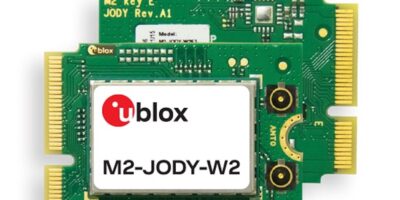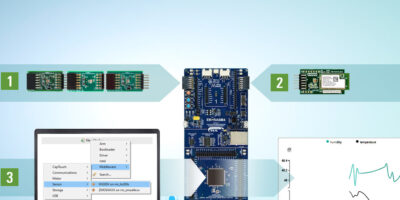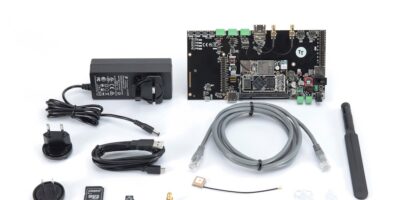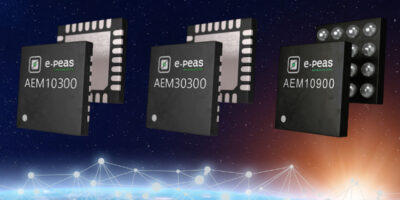A set of Wi-Fi 5, Wi-Fi 6, and Bluetooth expansion cards which plug into NXP Semiconductors’ i.MX processor evaluation kits allow users to try connectivity options, says u-blox. The cards conform to the M.2 form factor and integrate u-blox modules powered by wireless SoCs from NXP.
The cards use NXP’s integrated 88W8987 and 88Q9098 Wi-Fi 6 + Bluetooth chipsets and easily plug into the M.2 sockets to evaluate i.MX and development kits are claimed to make it significantly easier for developers to explore the many wireless connectivity possibilities enabled by their modules.
u-blox has launched two wireless connectivity cards based on its JODY modules. The cards are built to the M.2 Type 2230 Key E form factor, for which sockets are provided on the latest range of NXP i.MX evaluation boards.
The M2-JODY-W3 card comprises a u-blox JODY-W3 Wi-Fi 6 and Bluetooth 5.1 module. The module’s NXP 88Q9098 chipset supports IEEE 802.11ax and dual mode Bluetooth 5.1. It runs concurrent dual band Wi-Fi 2.4 GHz and 5 GHz networks using dual MACs, and 2×2 MIMO antenna set-up in each band.
Bluetooth support in the M2-JODY-W3 includes dual-mode Bluetooth 5.1 Classic and LE, as well as the standard’s long-range operation option. The M2-JODY-M3 card supports simultaneous operation of Wi-Fi and Bluetooth. Its Wi-Fi functionality includes simultaneous access point, station, or Wi-Fi Direct modes.
The M2-JODY-W2 card features a u-blox JODY-W2 Wi-Fi 5 and Bluetooth 5 module, which uses the NXP 88W8987 chipset to support IEEE 802.11ac and Bluetooth/Bluetooth Low Energy 5. The card supports dual-band Wi-Fi to the 802.11a/b/g/n/ac standards.
The card also supports dual-mode Bluetooth 5 operation and is capable of dual port simultaneous operation of Wi-Fi and Bluetooth, and its Wi-Fi functionality also includes simultaneous access point, station, or Wi-Fi direct modes.
The cards can be used as a way of evaluating wireless connectivity options in the context of both NXP i.MX evaluation kits and embedded systems boards built by NXP partners. The cards can be used in industrial automation, vehicle navigation and telematics, in-vehicle infotainment and hands-free audio, remote diagnostics and patient monitoring, security cameras, payment terminals, and other applications requiring high data rates, says u-blox.
The M2-JODY-W3 and M2-JODY-W2 cards can be used with legacy evaluation boards that do not feature an M.2 socket as a convenient microSD-to-M.2 adapter that connects to a standard microSD socket, or a microSD-to-SD adapter for boards with a standard SD socket.







